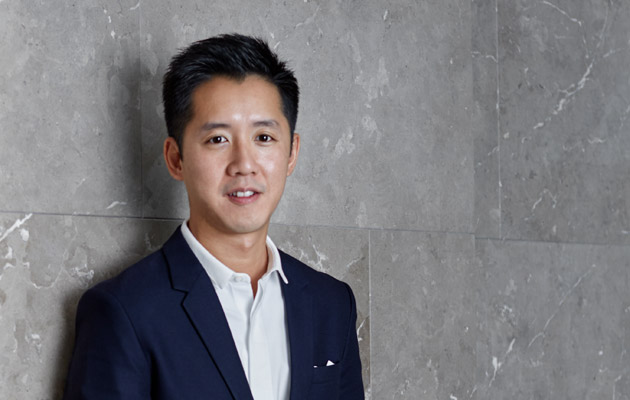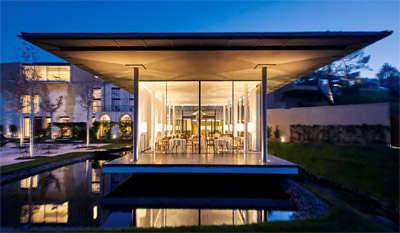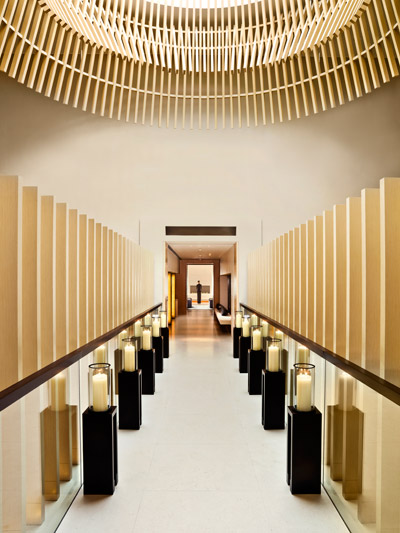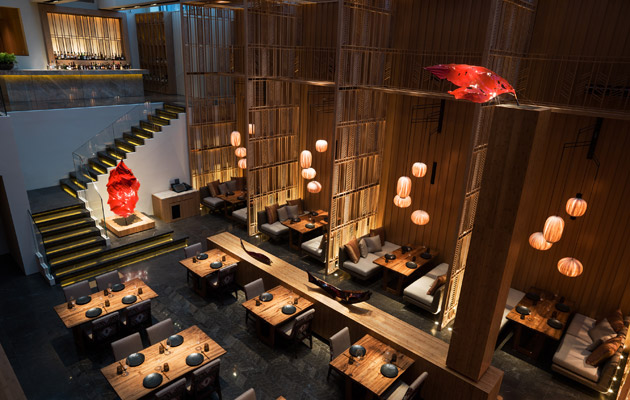|
|
||
|
In the lead up to his talk at Design Shanghai next month, the Hong Kong-based designer tells us about his latest work and why he is drawn to hospitality projects Architect and designer André Fu is responsible for some of the most acclaimed hospitality projects in Asia-Pacific, from The Upper House in his home town of Hong Kong to the Fullerton Bay Hotel in Singapore. In the lead-up to his talk at Design Shanghai next month, he talked spoke to Icon about his upcoming launches and his design philosophy. ICON You are launching several projects over the coming months. What are some of your personal highlights? ANDRE FU My largest commission to date, Kerry Hotel, will be unveiled this April – it is a waterfront hotel in my hometown, Hong Kong. I am overwhelmed with the challenges that come with the brief – with more than 500 guestrooms and a ballroom that fits over 100 tables, the scale of the project is beyond any I have laid my hands on. Scale aside, the goal is to create a hotel that evokes an intimate urban resort experience. The challenges present me with inspiring possibilities and I hope I shall create something refreshing for the city’s dynamic hospitality scene. Also, my lifestyle brand Andre Fu Living will be launching a carpet collection with Taiping Carpets in New York and Shanghai this March. This is the second time I am collaborating with Taiping – back in 2012, we worked on a carpet collection inspired by Asian cityscapes. The result was a range of designs that combined multiple fibres and tufting techniques. We have wanted to create another collection ever since.
ICON You’ve also recently finished designing the public spaces for a hotel in Provence, Villa La Coste. How did you go about combining your modern aesthetic with that of a region associated with quite a traditional look? AF My inspiration for each project is birthed out of my perception of what feels appropriate to the context. Yet Villa La Coste has been a unique experience – the design process has been extremely personal for me and has involved a very organic approach. Much of the design has been developed through a series of intimate discussions with the owner himself. Every time I returned to the site, the scheme was adjusted and refined. ICON This kind of project is quite typical of your portfolio – interiors and public spaces for hotels and restaurants. What draws you to these projects and how does your architectural thinking manifest itself in your work? AF My architectural training has allowed me to begin the design process from a space-planning perspective – I see the flow of the guest as key to defining the experience. The sense of journey is always the soul of my work – be it the layering of the space or its proportion.
ICON What is the consistent thread that runs through your projects? AF My architectural career and my experiences in the field of hospitality design has taught me that designs are only relevant when they are receptive to the client’s evolving needs. To remain observant is a key part of my work. After all, customers today are longing for genuine, timeless and high-quality experiences that are honest. Such an underlying consideration remains a common thread in my works. ICON Your approach has been described as including a ‘rigorous pursuit of new Asian sensitivities’. Could you explain what that means? AF I believe my design aesthetic has always embraced a sense of balance and calmness, which for many would trace back to my Asian roots. Yet my upbringing in the UK and the dynamics of modern Asian life have influenced my creative language to create a design vocabulary that is rooted in an underlying Asian sensibility, yet remains international its expression. ICON You are speaking at the Design Shanghai conference in March. As a Hong Kong-based designer, are there any particular shifts or trends you are seeing or anticipating in the country and region? AF The consumer market in China has evolved significantly over the past 10 years. Such exposure has led to customers being much more educated to the type of experience they are after. In return, this leads to a much greater diversity in design offerings to respond to such an evolution in market demands. |
|
|
|
||
|
|
||























